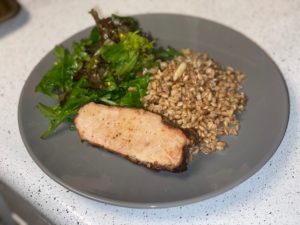
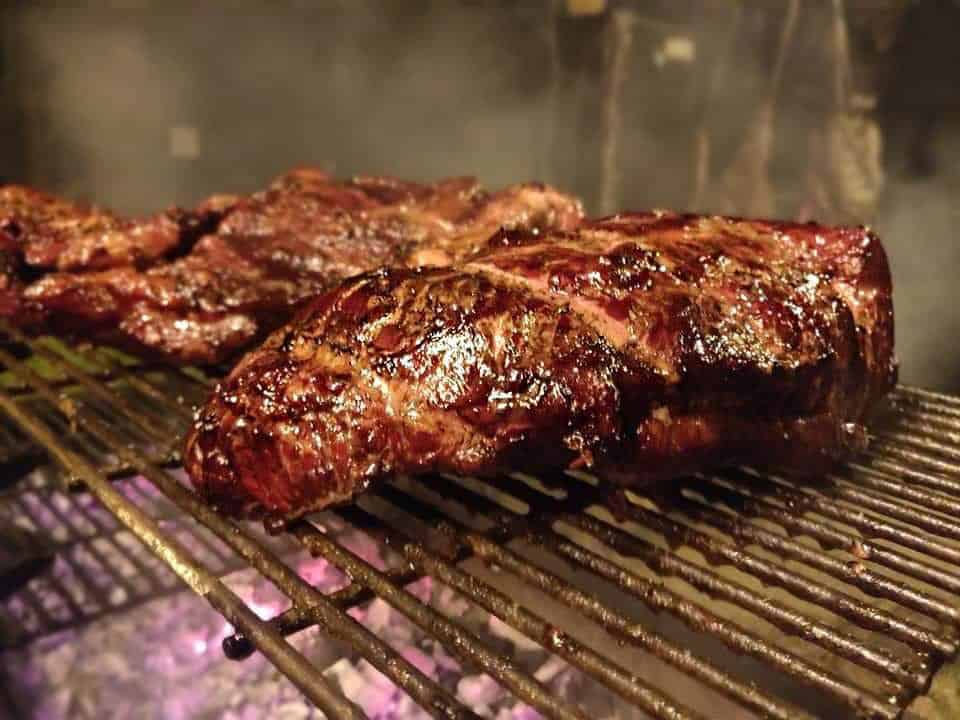
If you are new to the world of grilling and smoking, you will meet a lot of words that will look unfamiliar to you and to become better you will have to start understanding the language, this is basic!
I pick some of the most important stuff you will have to know before starting to become a pitmaster!
It is one of the most ancient ways to cook food. The prehistoric men used to cook their meat in a cave full of smoke, they notice the food is becoming much tastier this way!
They also find out this is a good way to preserve food by exposing it to smoke. You can smoke pretty much everything, the most common are meat, fish, chicken, and cheese.
Smoking foods create the Maillard reaction, which occurs when heat on a dry surface breaks down sugars and amino acids.
A process of using smoke for flavor and preservation but not for cooking. The process takes place at temperatures between 20°C or 30°C / 68°F or 86°F.
The most common things to cold smoke are fish, cheese, sausages, and vegetables. The cold smoking gives aromatic cover and crazy taste to the raw material we put in the smoker.
Cold smoking does not cook foods, and as such, meats should be fully cured before cold smoking.
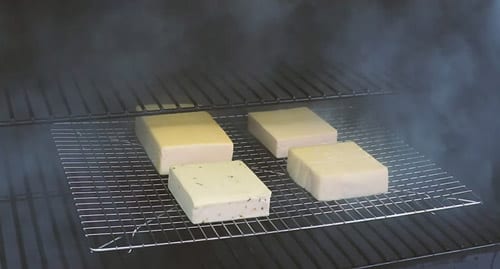
At this process, we expose the meat to controlled heat at around 80°C or 176°F.
Like the cold smoking, with hot smoking, we cover the raw material with amazing and unique flavors. Most of the time at this process the meat gets fully cooked but sometimes we will have to use the oven to finish and use deep cooking.
This is a mix of smoking, roasting, and baking. The smoker/grill gets to the temperature of above 120°C or 248°F and the process will be baking or roasting the stuff with a smoke bath full of amazing flavors!
Most people use this method to make turkey and pig.
This is a chemical reaction between an amino acid and reducing sugar, usually requiring the addition of heat, like caramelization. This reaction happens normally above 140°C or 285°F.
This reaction is what gives the meat a nice dark color and mostly adds the flavor to the meat.
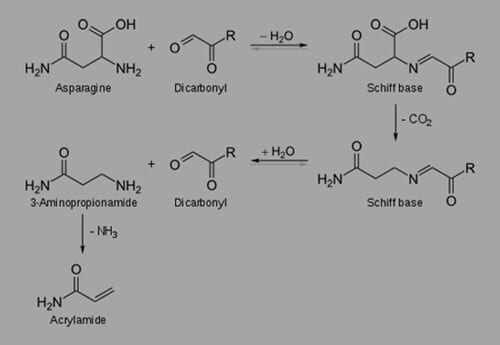
A smoke ring is often considered the hallmark of great barbeque. Many pitmasters and barbecue experts achieve this desirable trait with ease, and it is the goal for many backyard chefs as well.
It does not add any flavor at all but the pink ring for sure adds some authentic and mouthwatering look.
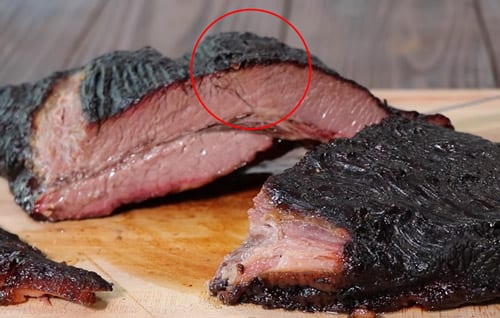
The dark crunchy and crust that forms on meat when cooked low and slow. A combination of the meat drying out, any rub applied before cooking and the Maillard reaction.
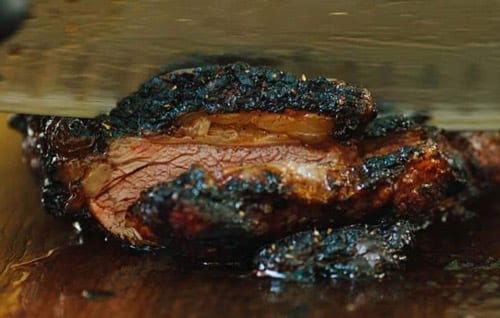
We may use a cooler as part of the smoking process to let the meat “rest”. Sometimes we will have to put the meat covered with aluminum foil in a cooler.
At this time the meat will keep getting tender and tender. The collagen keeps to break and the inside temp gets to more pleasant to eat.
The process of aging meat, almost always beef rib eye and strip steaks, in a temperature and humidity controlled environment. The process changes beef by two means. Firstly, moisture is evaporated from the muscle. The resulting process of desiccation creates a greater concentration of beef flavor and taste.
Secondly, the beef’s natural enzymes break down the connective tissue in the muscle, which leads to more tender beef. Dry-aged beef is hard to find, 28 days old is the most common age, and it is very expensive.
There are two main ways you can use wood when you barbecue.
The wood you use to add smoke flavor to your meat comes in many shapes and sizes, such as chips, chunks, pellets or sawdust. The best way to use these different forms of wood will depend on your situation.
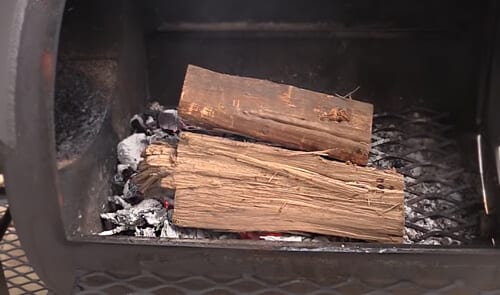
A person who eats meat! a lot of meat!! I hope 100% of who reads this book is a real carnivore that this picture down here going to get him mouthwatering.
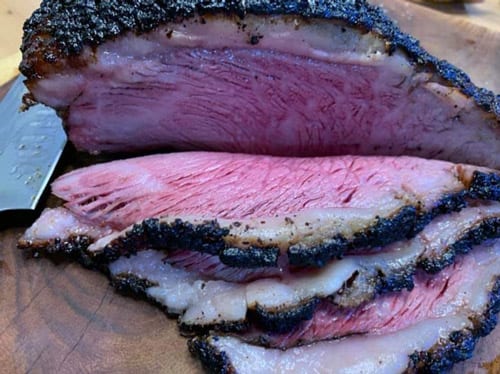
A spice and/or herb mix that is used to flavor the meat.
There are 2 kinds of rubs, dry and wet.
Simply the different is the texture. A dry rub is a mix of spices/herbs. And like it sounds, the wet rub is just a mix of spices/herbs that has a “wet” ingredient like maple, honey, apple cider or something else that makes it wet.
The name rub became because we rub the meat when we put the rub. I feel like I am giving a massage to my wife when I rub my briskets.. but this will be our secret!
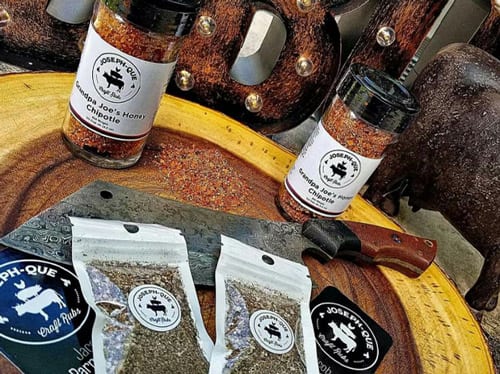
The process of submerging a cut of meat in a brine solution, which is simply salt dissolved in water. The meat absorbs extra liquid and salt, resulting in a juicier and more flavorful final dish. This technique is particularly great for lean cuts of meat that tend to dry out during cooking.
For example, to eat the famous corn beef you need to brine the meat between 7-10 days!
A method of cooking in which food is placed in a plastic pouch or a glass jar and cooked in a water bath for longer than usual cooking times (usually 1 to 7 hours, up to 48 or more in some cases) at an accurately regulated temperature. The sous vide came from French, the meaning is “under-vacuum”.
The temperature is much lower than usually used for cooking, typically around 55 to 60 °C (131 to 140 °F) for meat, higher for vegetables. The intent is to cook the item evenly, ensuring that the inside is properly cooked without overcooking the outside, and to retain moisture.
This method is connected in a way or another to the sous vide. At this method, we start cooking the meat at a low temperature to cook the meat from inside and when we get to right doneness then we sear at a very high temperature to give the dark cover and cause the Maillard reaction to give the right look and the desired taste.
Many pitmasters say that this is the best way to get to the perfect steak and I have to agree.
A high heat zone on a gas grill specifically for browning the surface of steaks and other meats.
Vegans are smug and rare creatures that live among us. Their tiny community is spread worldwide and fed on lies and grass.
If you ever suspect someone to be a vegan but you just weren’t sure, don’t worry! The first thing a true vegan will tell you is that he is vegan.
How to recognize a vegan? Just ask them anything, it’s probably the first thing they will say.
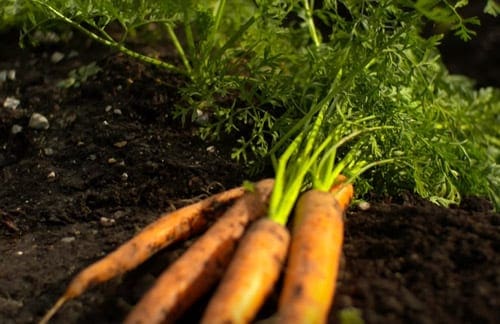
A barbecue boss, who operates a barbecue pit.
I believe that everyone can become a pitmaster with enough determination and experience!
This is the most basic and important method that you need to know, for a beginner who still burns their briskets or every burger becomes black. This is very relevant.
A newbie griller thinks that the right way is to put all our meat on the grill on the highest heat possible and after a few minutes it’s ready.. well … it’s a big mistake. Because we need to understand that on our grill there are different heat sources and we need to know how to control them perfectly.

Recipe by Pitmaster Shane Hauck Smoked Pork Center cut Loin (watermelon tea/fennel brine) Prep: 24 hours+ Cook: 2 hours, 30 minutes Ingredients: 2-3 lb pork

Recipe by Pitmaster Shane Hauck Smoked Chocolate Covered Pretzel Bread Pudding Prep: 2 hours Cook: 1 hour Yield: 13×9 tray Ingredients: 3 cups milk 3
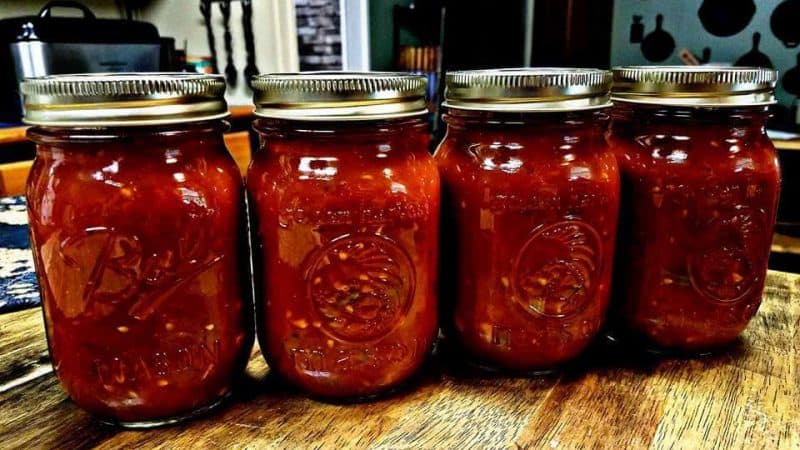
Smoked Salsa Cooking Method: Slow Cooker Cooking Time: 2 h to 3 h INGREDIENTS 8 Medium tomatoes, cut in half and core removed 2 ½
© 2022 Artisan Smoker